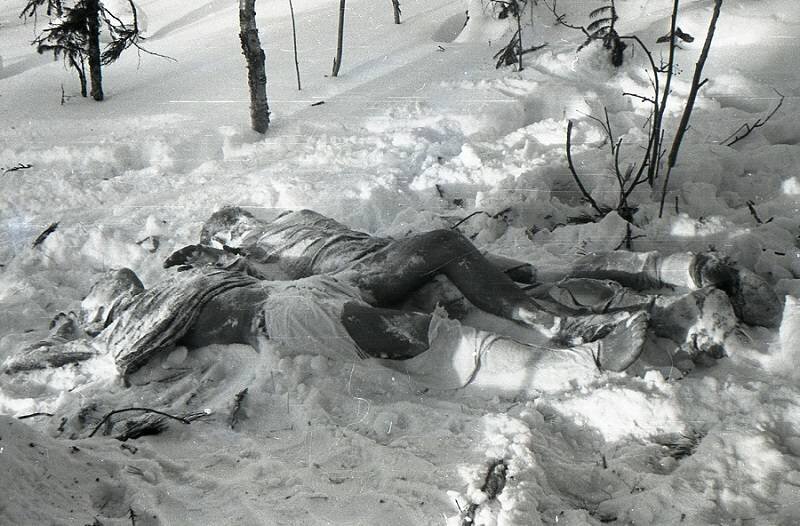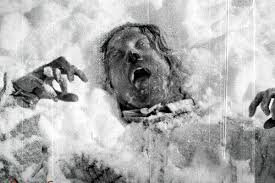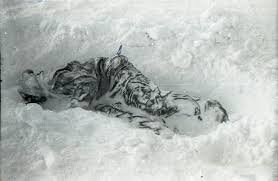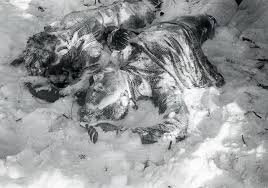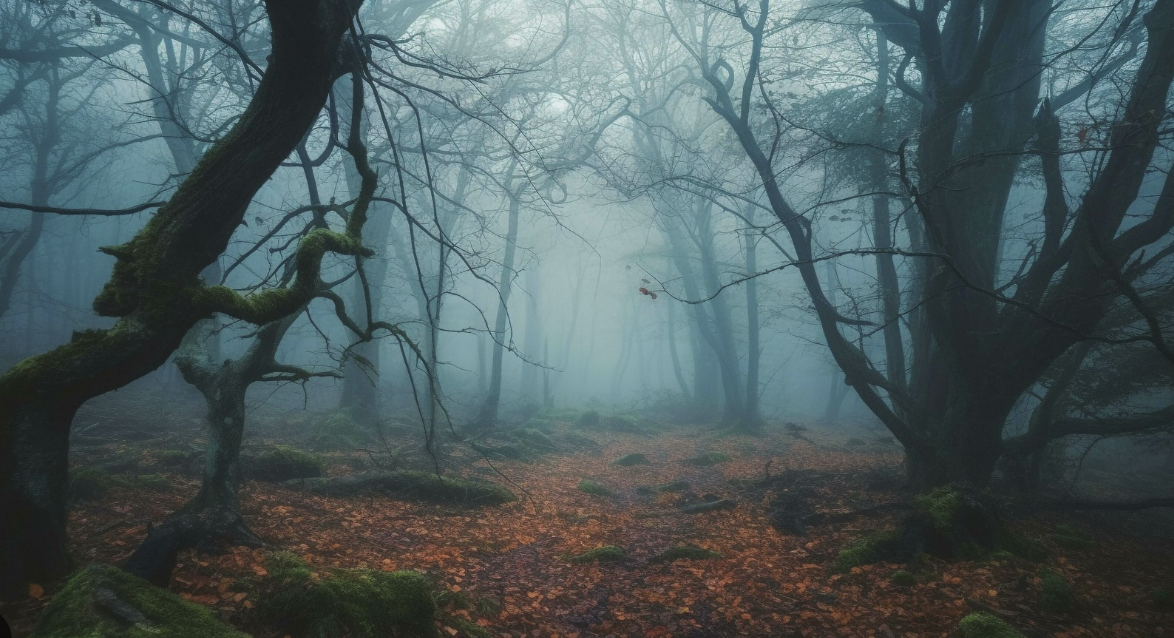
Mysterious Stories Blog
Strange, disturbing and mysterious stories from the outdoors
The mysterious story of the Dyatlov Pass Incident in Russia's Ural Mountains
WARNING - CONTAINS DISTURBING IMAGES
Revised May 2024
Thanks to the guys at the Podcast “Locations Unknown” for their show notes for the recent episode 14 on the Dyatlov Pass incident. The show is great and highly recommended if you are interested in mysterious disappearances from the great outdoors. Listen to Episode 14, Dyatlov Pass.
On January 31, 1959, a 23-year-old ski hiker named Igor Alekseyevich Dyatlov (Dee-at-lao-v) embarked on a journey to reach the peak of Otorten, a mountain in the Northern Urals.
Igor Alekseyevich Dyatlov
Coincidentally, the incompetent (or perhaps scapegoat) Chernobyl deputy chief-engineer, was also called Dyatlov. Anatoly Stepanovich Dyatlov was sentenced to 10 years hard labour for his role in the accident on Saturday 26 April 1986, at the No. 4 nuclear reactor in the Chernobyl Nuclear Power Plant, near the city of Pripyat in the north of Ukraine.
Igor, the Soviet college student, brought a team of eight experienced hikers from the Ural Polytechnic Institute along for the adventure. Before he left, Dyatlov had told his sports club that he and his team would send them a telegram as soon as they returned.
On February 2nd, the group set up camp on the slopes of the now named “Dyatlov Pass”. During the night, something forced members of the group to tear out of their tents fleeing into the subzero winter climate.
Dyatlov Pass hikers 1959
The Ural Mountains, or “the Urals,” are a mountain range that runs from north to south through western Russia, from the coast of the Arctic Ocean to the Ural River and northwestern Kazakhstan. The range forms part of the conventional boundary between the continents of Europe and Asia. The mountains are rich in resources, including metal ores, coal, and precious and semi-precious stones. Since the 18th century, the mountains have contributed significantly to the mineral sector of the Russian economy.
The climate of the Urals is continental. The average January temperatures increase in the western areas from −20 °C (−4 °F) in the Polar to −15 °C (5 °F) in the Southern Urals and the corresponding temperatures in July are 10 °C (50 °F) and 20 °C (68 °F). Our group was in the Northern part of the Urals
The Northern Urals are dominated by conifers, namely Siberian fir, Siberian pine, Scots pine, Siberian spruce, Norway spruce, and Siberian larch, as well as silver and downy birches. The forests are much sparser in this portion due to the climate. The Ural forests are inhabited by animals typical of Siberia, such as elk, brown bear, fox, wolf, wolverine, lynx, etc.
What is interesting about this case is the number of photographs and documentation for such a dated event. The campsite of the group offered a glimpse into what occurred on their final days. Searchers were able to recover cameras and diaries that helped piece together a timeline.
Timeline - The Dyatlov Pass incident
February 1st, 1959
Dyatlov pass
The team began to make their way through the then-unnamed pass leading to Otorten. As they made their way toward the base of the mountain, a huge snowstorm with high winds hit the group of friends. Visibility issues caused the team to lose their sense of direction, and instead of moving toward Otorten, they accidentally deviated west and found themselves on the slope of another nearby mountain. There is some irony in the name of the mountain they ended up at. The name of the mountain is Kholat Syakhl, which means “Dead Mountain” to the indigenous Mansi people of the region. To avoid losing the altitude they had gained, Dyatlov called for the camp to be made there before their ascent of Otorten
February 20th, 1959
The group was supposed to radio when they were back; by this time, with no communication, a search party was formed to look for the missing students. The volunteer hiked through the pass and found the campsite but the group were nowhere to be found. The volunteer teams quickly dispatched the army and police investigators to determine what had happened to the missing students. Though the students were experienced hikers, the route they chose, mixed with the time elapsed and the condition of the campsite, left investigators feeling like this would be a recovery mission, not a rescue.
The investigators did recover the bodies but the state they were in truly baffled the search teams.
Around Feb 26th, 1959
Investigators were on the scene at the campsite. Strangely, the team immediately noticed that tents at the site were cut open from the inside, and most of the team’s belongings, including shoes and boots, were all left behind.
Upon continuing the investigation, they were able to make out 9 sets of footprints, some clearly barefoot or in only socks, some with one shoe on. All headed towards a wooded area about a mile away from camp. Strangely, based on the depth of the prints it was noted that they seemingly left camp in an orderly fashion, not running and wild, single file and calm.
At the forest’s edge, under a large tree, the investigators found the remains of a small fire and the first two bodies: Yuri Krivonischenko, 23, and Yuri Doroshenko, 21. Despite temperatures of −13 to −22°F on the night of their deaths, both men’s bodies were found shoeless and wearing only underwear. It was noted that branches on the tree were broken or scarred as if someone climbed up to 6ft high.
They then found the next three bodies, those of Dyatlov, Zinaida Kolmogorova, 24, and Rustem Slobodin, 23; based on the location and footprints, it appears that they perished on their way back to the camp from the cedar tree where the first two bodies were found.
While the circumstances were puzzling, it was very clear the cause of death for the 5 individuals was hypothermia. There was no apparent external damage or trauma to the bodies outside, which would be expected by exposure to extreme cold temps. There were some minor burns and blood around the mouths of a few of the bodies.
It would be 2 months before the other students were found and the real mystery would set in.
April 1959
The remaining students were discovered buried under the snow in a ravine 75 meters or roughly 250ft deeper into the woods than the cedar tree where the others were discovered. The condition of the bodies of these four told a dramatically different story than simple hypothermia.
Nicolai Thibeaux-Brignolles
Three of the hikers had fatal injuries. Nicolai Thibeaux-Brignolles, 23, suffered significant skull damage in the moments before his death. Lyudmila Dubinina, 20, and Semyon Zolotaryov, 38, had major chest fractures that could only have been caused by an immense force, comparable to that of a car crash.
Dubinina was missing her tongue, eyes, part of her lips, as well as facial tissue and a fragment of her skull bone.
Lyudmila Dubinina
Lastly, investigators found the body of Alexander Kolevatov, 24, he was in the same location but lacked any fatal injuries like the others.
It was hypothesized that the two groups died at distinctly different times. This second group was making use of clothing from others in the first group. It led investigators to believe that they took the clothing from the other post-mortem.
Dubinina’s foot was wrapped in a piece of Krivonischenko’s wool pants, and Zolotaryov was found in Dubinina’s faux fur coat and hat — suggesting he had taken them from her after she had died, just as she had taken from Krivonischenko.
May 1959
The investigation was abruptly ended, and the cause of death was noted by the lead investigator, who said, “The cause of death was an unknown compelling force which the hikers were unable to overcome.
Official theories of what happened at the Dyatlov Pass in 1959
Mansi tribesmen
Early on, many Soviets suspected that the students’ deaths were the result of an ambush by the local Mansi tribesmen. A sudden attack would account for the way the hikers fled their tents, their disarray, and the damage done to the second group of bodies. But that explanation fizzled quickly; the Mansi people were largely peaceful, and the evidence in the Dyatlov Pass didn’t support violent human conflict. For one, the damage done to the students’ bodies exceeded the blunt force trauma one human could inflict on another. There was also no evidence of any footprints on the mountain beyond those made by the hikers themselves.
Avalanche
Investigators then conceived of a swift, violent avalanche. The sound of snow collapsing, an early warning of the deluge to come, would have frightened the hikers out of their tents in a state of undress and sent them sprinting for the tree line. An avalanche would also have been powerful enough to inflict the injuries that killed the second group of students. Despite the compelling avalanche theory, controversy raged. Would the experienced hikers have made camp in a spot that was vulnerable to an avalanche? Then, too, there was the fact that when investigators found the bodies, they noted no evidence that an avalanche had occurred any time recently in the region. There was no damage to the tree line, and searchers observed no debris. No avalanches had been recorded at that site before, and nor have there been any since.
Hypothermia
Paradoxical Undressing has been proposed but does not account for leaving a warm tent; it usually rears its head in the stages of hypothermia.
Katabatic wind
A katabatic wind is a technical name for drainage wind, a wind that carries high-density air from a higher elevation down a slope under the force of gravity. Such winds are sometimes also called fall winds. Katabatic winds can rush down elevated slopes at hurricane speeds, but most are not as intense as that, and many are 10 knots (18 km/h) or less. Katabatic winds are most commonly found blowing out from the large and elevated ice sheets of Antarctica and Greenland. The buildup of high-density cold air over the ice sheets and the elevation of the ice sheets bring into play enormous gravitational energy. Where these winds are concentrated in restricted areas in the coastal valleys, the winds blow well over hurricane force, reaching around 300 km/h (190 mph). In Greenland, these winds are called piteraq and are most intense whenever a low-pressure area approaches the coast.
Fire
In one of the photos, it shows what looks like a makeshift metal exhaust pipe out of one of the tents. They used a metal stove for heat and cooking, bits of cooked food were found in the vacated tents. It is possible that either the exhaust was leaking or was disassembled while the coals were not fully extinguished. Imagine the panic of coal reigniting and exhausted into the tent while asleep. Waking up in a panic cutting your way out. It could also explain the burns from frantically trying to move or do “something” with the hot stove, as well as the blood around the mouth from smoke inhalation. They got out, and with a destroyed tent, they calmly went to where they thought they could get shelter, the treeline. There they attempted a makeshift camp and fire. Only issue…. Why did they not dress appropriately for this option?
Russian Yeti - the Menk
With humans effectively ruled out as the culprits, some began to postulate that they could be non-human assailants. People began to whisper that the hikers were killed by a Menk, a kind of Russian yeti, to account for the immense force and power necessary to cause the injuries to three of the students. This theory is popular among those who focus on the damage to Dubinina’s face. While most explain her missing tissue by positing a visit from small scavengers or perhaps decay resulting from her partial submersion in a watery under-snow stream, Menk proponents see a more sinister predator at work.
The Discovery Channel ran a documentary in 2014 called “The Russian Yeti: The Killer Lives,” which claimed that one of the final pictures found on the group’s camera looked like a Russian Yeti, which could have been stalking the hikers and leading to their deaths. Was it a guy in a coat or the Russian Menk?
“On 2nd February 2, 1959, nine college students hiked up the icy slopes of the Ural Mountains in the heart of Russia but never made it out alive. Investigators have never been able to give a definitive answer behind who, or what caused the bizarre crime scene. Fifty-five years later, American explorer Mike Libecki investigates the mystery, but what he uncovers is truly horrifying. THE RUSSIAN YETI follows Mike as he traces the clues and gathers compelling evidence that suggests the students' deaths could be the work of a creature thought only to exist in folklore. Based on diary accounts, forensic evidence, and files that have just recently been released, Mike pieces together the graphic stories in search of what really happened that evening. Following a trail of evidence, Mike finds proof that the hikers were not alone - a photograph, taken by one of the hikers a day before they died suggests that they encountered a Yeti. But just how far will they go to find the answers?”
Military Coverup
Small amounts of radiation were detected on the bodies, this led to wild theories that the students had been killed by some sort of secret radioactive weapon. Those who favor this idea stress the strange appearance of the bodies at their funerals; the corpses had a slightly orange, withered cast.
But had radiation been the cause of death, more than modest levels would have registered when the bodies were examined. The corpses’ orange hue isn’t surprising given the frigid conditions in which they lay; they were partially mummified in the cold.
Once the secret military weapon was proposed, it was too sexy a concept to let die. Some say the team was unfortunate enough to stumble into the USSR testing a concussive weapon or perhaps a parachute mine exercise.
This explanation is popular because it is partially supported by the testimony of another hiking group, one camping 30 miles (50 kilometers) roughly from the Dyatlov Pass team on the same night. This other group spoke of strange orange orbs floating in the sky around Kholat Syakhl — a sight, proponents of this theory, interpret as distant explosions.
The hypothesis goes that the sound of the concussions drove the hikers from their tents in a panic. Half-clothed, the first group died of hypothermia while attempting to take shelter from the blasts by waiting near the tree line. The second group, having seen the first group freeze, determined to go back for their belongings but fell victim to hypothermia too, while the third group got caught in a fresh blast further into the forest and died from their injuries.
Lev Ivanov, the chief investigator of the Dyatlov Pass incident, said, “I suspected at the time and am almost sure now that these bright flying spheres had a direct connection to the group’s death” when he was interviewed by a small Kazakh newspaper in 1990.
Censorship and secrecy in the USSR forced him to abandon this line of inquiry. In the end, the hikers’ deaths were officially attributed to “a compelling natural force” and the case was closed.
But in February 2019, Russian officials reopened the case for a new investigation. This time, however, officials said they would only consider three theories: an avalanche, a snow slab, or a hurricane. The pass in which the hikers lost their lives was named the Dyatlov Pass in honor of Igor Alekseyevich Dyatlov, the leader of the lost expedition.
A monument to the nine hikers was erected in the Mikhajlov Cemetery at Yekaterinburg.
Mikhajlov Cemetery at Yekaterinburg
Exclusive articles for members of StrangeOutdoors that are not available elsewhere on the site.
See the latest Exclusive members-only articles on StrangeOutdoors.com
Read other strange stories from the Mountains
The mysterious deaths of the Korovina group on Mount Tritrans (Member Only)
The haunting case of the Mathias Group (Yuba County Five)
The bizarre disappearance of Stacey Arras from Yosemite National Park
The mysterious disappearance and death of Doctor James McGrogan in Colorado
The Strange disappearance of Connie Johnson from Big Fog Mountain
The bizarre disappearance and death of Robert "Bugsy" Springfield in the Bighorn Mountains
The Strange Disappearance and death of Aaron Hedges in the Crazy Mountains (Member only)
Further reading and viewing
Dead Mountain: The Untold True Story of the Dyatlov Pass Incident: (Historical Nonfiction Bestseller, True Story Book of Survival) by Donnie Eichar, Oct 1 2014.
The Dyatlov Pass Incident Movie, Director Rennie Harlin, 2013, Starring: Holly Goss , Matt Stokoe , Luke Albright and Ryan Hawley. OK but not great!
Death of Nine: The Dyatlov Pass Mystery Paperback – 9 Jan 2019 by Launton Anderson
https://allthatsinteresting.com/dyatlov-pass-incident
https://www.cnn.com/2019/02/04/europe/dyatlov-pass-incident-scli-intl/index.html








